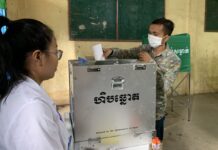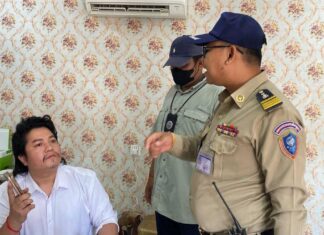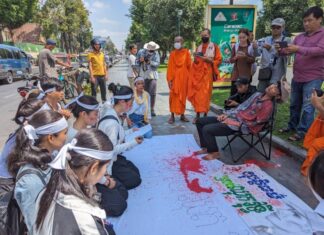Up to 3,000 families will be able take shelter from floods once Tbong Khmum — the country’s youngest province — completes its 10-hectare “safety hill,” which was announced by governor Chan Sophorn last week.
The hill’s construction, which is already underway, would be readied for flash floods expected this rainy season as the Mekong River’s waters rise, Sophorn said.
Sophorn, speaking at a press conference last week outlining the progress made by the province last year, said two districts in the province — Kroch Chhmar and Suong — spanned the Mekong and were particularly disaster-prone.
Last year, authorities carried out 76 disaster interventions responding to flash floods, fires, cyclones and other natural disasters in the province, affecting a total of 4,265 families, he said.
“This is humanitarian work,” Sophorn said of the safety hill, explaining that it would have electricity, running water, latrines, enough shelters for 3,000 families and would be built on state land. The facilities would be made available even for people outside the province, he said.
Some families might move to the safety-hill shelters during emergencies and not want to leave, Sophorn said. He considered it unlikely that families from the province wouldn’t want to return to their villages, but it was possible for families from outside the province who were seeking refuge.
Such families would be accommodated, eventually settling them into social land concessions, he said.
“If displaced people want to stay longer, they can stay. But if they do, they will need to be certified by their local authorities,” Sophorn said. “If they are absolutely poor and homeless, we can allocate social concession land for them as it is government policy.”
The safety hill will be located in Tbong Khmum district’s Tonle Bet commune, about 6 km from the Kizuna Bridge along National Road 7, according to Land Management Ministry spokesman Seng Lot.
“We have completed the excavation and landfill, and now the remaining work is to have the land compacted,” Lot said.
Tbong Khmum, which was split from Kampong Cham at the end of 2013, has a population of nearly 900,000, according to the province’s website. It has 873 villages in 64 communes.
Tan Theara, a real estate agent and a resident of Kroch Chhmar district’s Tuol Snuol commune, said security in the province seemed to have improved since the split from Kampong Cham, with fewer thefts of villagers’ cattle recently.
However, some areas, including her village, needed urgent infrastructure upgrades, she said.
“My village is supplied with only electricity and not a [piped] water system, which is still a concern — we don’t have clean water for use in the village,” Theara said.












